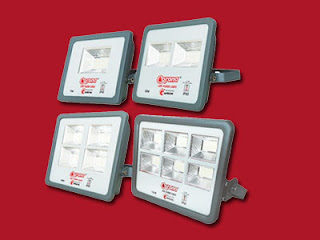Extension Cord Safety Tips Follow These Points
Extension cord manufacturers provide a convenient solution to many of your home and work electrical needs. However, they could also be risky fire hazards in the event that you do not utilize them properly. To ensure that you are using the extension cord in a safe manner, whether at home or at work, make sure you follow these basic guidelines:
Pick the best cord to complete the job. Various types of
cords can be utilized based on their intention. Search for a cord designed for
outdoor use if you intend to work outside. It should also have a thicker outer
cover constructed from plastic, rubber or vinyl. If you use indoor extension
cords outdoors, it could result in excessive heat. In the case of your work and
the environment you work in, you might prefer cords that are especially
suitable for use with chemicals, oils and extreme temperature.
If you intend to connect multiple devices on the cord
simultaneously, make sure you add your current needs for every device. The energy
requirements are usually listed on the device's own or in the manual for the
device. The power requirements of some devices are stated in watts rather than
amps. A straightforward formula for converting the rating is amps = 110 watts.
If the extension cord does not
contain a maximum amp rating, you can determine its capacity by studying the
American Wire Gauge (AWG) ratings. The smaller the AWG, the more power the cord
has to supply.
Make sure you
check the cords prior to use.
In addition to selecting the right cord for the
job, it is also important to regularly check and maintain the extension cords.
Examine the cord for signs of wear, degrading or any other damage. Be cautious
in handling cords that are damaged. even touching one exposed strand could
cause the sensation of a burn or electric shock. You can avoid damaging your extension cord by correctly taking them
out of outlets - make sure you don't pull the extension cord away using the actual cord while taking it out of
the outlet. If you spot any sort of damage to the cord, then you'll be required
to throw it away and replace it with a new one.
Review cord
position.
Extension cords should be utilized in areas where
they aren't normally walked on. The placement of cords in busy locations can cause
slips and falls, while cords that are walked over are more likely to degrade.
Extension cord must be run through walls or baseboards or tucked behind
equipment or furniture to keep them far enough away from the area. If your cord
isn't sufficient to connect across the wall between your outlet and the device,
don't connect a second cord. In the event that you plug two extensions cords
and you reduce the efficiency and operating voltage of the appliances and tools
you'll be using, and may cause damage to motors.
Other crucial
tips for safety include:
Do not replace extension
cord for wire that is permanent.
Large dependence on cords can be an indicator that
you have limited outlets to satisfy your requirements. Make sure you have
additional outlets in the places you'll need they.
Do not use plugs with three prongs with outlets
that have only two slots for plugs. Don't remove the pin that connects to
ground in order to make a fitting. This is not the point of a three-prong plug,
and can result in an electric shock.
Extension cords are a basic and common electrical
solution that can be used in the office and home, but they could be extremely
dangerous in the wrong way. Before connecting an extension cord to a device ensure that you've chosen the right
cord, make sure it's working properly and ensure that the cord is properly
placed.



Comments
Post a Comment